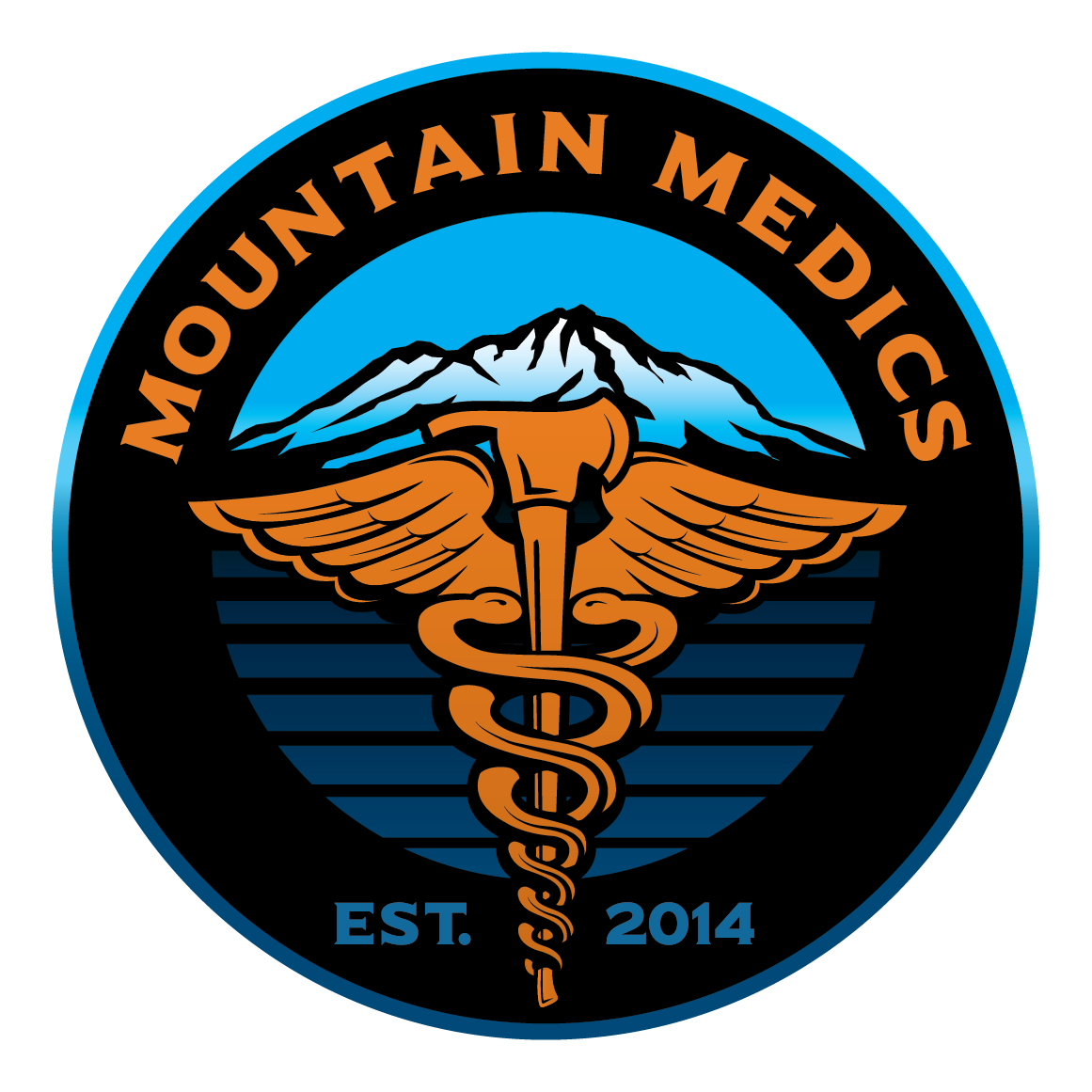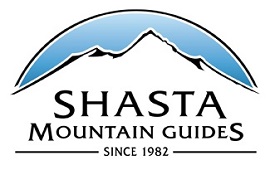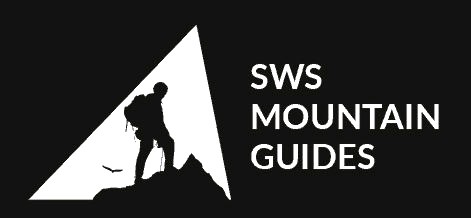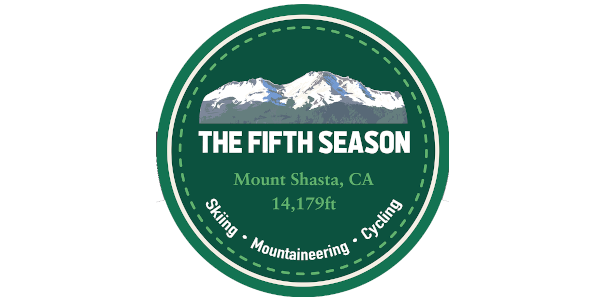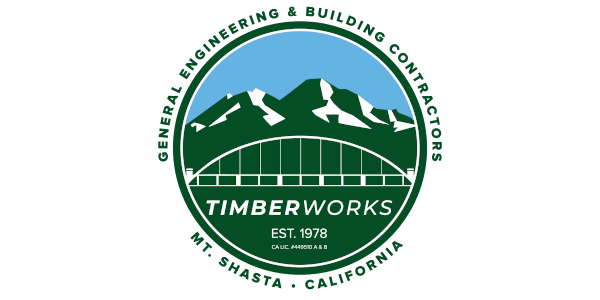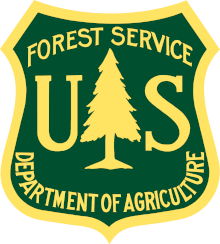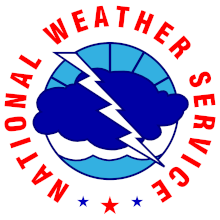A series of wet winter-like storms have smoothed out the surface textures across the mountain. A weather pattern change took place over the past week and a recent (5-15 through 5-16) winter storm dropped 6.88 inches of water on the mountain followed by a second colder storm with 1.98 inches of water with snow levels as low as 5,000 feet (5-18 through 5-19). This translated to 23 inches of fresh snow, recorded at our Old Ski Bowl weather station over the last week. Avalanche danger is a concern at this time, and it's advised to carry an avalanche beacon, shovel and probe if heading up onto the hill anytime soon. A large D2/R2 avalanche was observed in Old Ski Bowl releasing around 10,600 feet and running for approximately 1,200 vertical feet. This slide is estimated to have released around 8 am this morning (5-20). Visit our recent observation page for more information. This storm is case in point for springtime weather. Anything is possible and you need to be prepared with proper knowledge, skills and equipment for full-value, winter conditions.
Bunny Flat and Northgate trailheads are open with multiple feet of snow still on the ground. Bunny Flat trailhead accesses all routes on the south and west aspects of the mountain. As of last week, you could make it to within .5 miles of Northgate trailhead with a vehicle. Expect this to be farther now. This trailhead accesses all routes on the north aspect of the mountain. For the east side, Brewer Creek TH is still a ways out, with over 10 road miles. Clear Creek TH is approximately 3.1 road miles out.
Winter-like, spring storms are common this time of year on Mount Shasta. Bitter cold, extreme winds, avalanche danger, poor visibility and potentially icy surfaces are a few of the hazards. Be prepared. Always check the weather before you climb. The National Weather Service's Recreational Report is a good place to start. Have "mountain sense". Make good decisions. Leave summit fever at home. It's up to you to plan ahead and prepare properly. Have the courage to turn around if this seems like the best decision. Keep your group together. Watch out for party members of lesser experience.
Climbing on the upper mountain has been good, but smooth and firm snow surfaces in the morning mean slide-for-life conditions if one should slip and fall. Proper ice axe and crampon use are mandatory along with a solid self-arrest. Always wear a helmet. Glissading? Take OFF your crampons and make sure the snow is soft, remain in control at all times. Once you get up to speed, it can be very hard to stop. Snow surfaces will soften in the afternoon, but daily temps, wind and aspect will all play into that. Concern for loose-wet avalanches will exist on very warm days with prolonged, poor overnight re-freeze. If you find yourself on a sunny slope, post-holing to your knees, rollerballs, pinwheels and/or see other small loose-wet slides... these are all clues that larger avalanches are possible. Snow conditions can change quickly this time of year. Pay attention out there.
Mount Shasta can host a lot of traffic this time of year. We think it should go without saying, but still we find trash and human waste left behind on the mountain by climbers and hikers. PLEASE, do your best to LEAVE NO TRACE. Rangers take this seriously and so should you.
At Bunny Flat, you can bivy in the parking lot and park at this trailhead free of charge. There are bathrooms, but no running water. There is no running water anywhere on the mountain at this time. Don't underestimate the amount of fuel it takes to melt snow for water. The bathrooms are open at Horse Camp, but the spring is still buried. Remember, it is required to pack out your human waste. Summit passes and wilderness permits are also required. Rangers will check, have it easy to access. You can get these 3 items for self issue at all OPEN trailheads, 24/7.
The top two accidents we see on Mount Shasta include a slip/falls with failure to self-arrest and climbers ascending into poor weather and becoming lost and/or disoriented. Carry an ice axe, crampons, helmet and navigation tools and know how to use them. NO microspikes!
The Mount Shasta Avalanche Center has closed its doors for the season and will resume forecasts in December. We've issued a 'spring statement' on our avalanche advisory to cover some of the common spring time avalanche hazards.
If you plan on an ascent of Mount Shasta, the bottom line: be prepared. Any further questions, don't hesitate to give us a call. Don't forget, please obtain REQUIRED items for your climb of the mountain. These include: summit pass, wilderness permit & human waste packout bag. For required item details, click here.
The Brewer Creek and Clear Creek trailheads are still CLOSED for the season. One may still access these trailheads, but roads are not plowed. Prolonged approaches and/or a snowmobile is necessary during winter/spring.
The gate at Bunny Flat along the Everitt Memorial Highway is CLOSED. It is approximately 1.5 miles of snow covered roads exist to Panther Meadows and 3 miles to the Old Ski Bowl/South Gate Meadows trailheads. These roads are traveled by over snow vehicles to access the Old Ski Bowl. Panther Meadows campground is closed and will be for some time.
Dozen's of incidents occur on the mountain every season. The most common accidents include rockfall injuries, lost climbers, and slips and falls in steep terrain. Most accidents can be prevented with proper planning and preparation.
- Do not climb into a whiteout. Always carry a map and compass and/or GPS device and route plan ahead of time.
- Keep your group together. If you split up, have a solid plan and make sure everyone has the proper equipment and knows the way.
- Do not glissade with crampons on. If you choose to glissade, take OFF your crampons and make sure the snow is soft.
- Know how to properly self-arrest with your ice axe. A slip and fall on the upper mountain can be fatal.
- Wear a helmet and watch out for rockfall. Climbers get hit every year.
Understand that if something goes wrong, or a member of your climbing party gets injured, you need to be prepared to self-rescue. If you have an emergency on the mountain, call 911. Be prepared to provide your location and nature of injury.
Be Prepared
Our goal is to ensure you have a positive wilderness experience and come home in one piece! So,
- BE PREPARED
- DO YOUR RESEARCH
- ALWAYS WEAR A HELMET
- KNOW HOW TO USE YOUR ICE AXE & CRAMPONS.
- REMEMBER, YOU ARE RESPONSIBLE FOR YOUR OWN SAFETY.
Accidents and Hazards
Almost all the accidents on Mt. Shasta result from:
- Slipping and falling with a failure to self arrest
- Glissading when the snow is too firm
- Glissading with crampons on
- Climbing into a whiteout
- Being struck by early season ice fall or late season rockfall
With the right knowledge, skill, equipment, and decision making, all of these accidents can be easily prevented. Please, wear a helmet, and know how to use your ice axe and crampons any time of the year.
There is always potential for thunder storm activity during the summer months that can shroud the mountain in clouds, limiting visibility. Climbers becoming disoriented on the upper mountain in whiteout conditions, and subsequently descending the wrong route is not uncommon. These kinds of scenarios have resulted in many searches over the years. It should go without saying, but we will say it as a solid reminder: Check the weather before you go and more importantly, monitor the weather as you climb. DO NOT CLIMB INTO A WHITEOUT! Being caught on the mountain in any type of weather can compromise life and limb.
Many hazards exist in mountain terrain. Some of these include:
- Ice and rock fall
- Altitude
- Extreme weather
- Avalanches
Ice fall and rock fall are possible year round. It's a simple equation: as snow melts, rock fall increases. If rime ice is seen plastered to exposed rocks above, it will eventually flake off and fall onto climbers. Wear a helmet and keep your eyes up slope as you climb. Pay attention to other climbers: rock fall is often caused from climbers resting in melted out areas and accidentally dislodging rocks onto slopes and climbers below. Be careful not to kick rocks down onto others.
At a height of 14,179 feet Mount Shasta is a high altitude peak. It is common for climbers to experience acute mountain sickness (AMS) with signs and symptoms of nausea, headache, and lightheadedness. Despite being a common condition, AMS should not be taken lightly. It can quickly develop into the much more serious, and potentially deadly pulmonary or cerebral edema. Stop and take a break. If symptoms do not improve, your only choice is to descend!
Mt Shasta is a 14, 179 foot volcano with steep slopes, avalanches, glaciers, rockfall, altitude and extreme weather. Some may feel like Mt Shasta is "safe" due to it's proximity to Interstate 5 and it's "easy" climbing objective connotation. This is false. One should still expect cold, winter-like conditions any time of year. Have the appropriate gear AND skill level. Mountaineering is dangerous and climbers must be able to constantly evaluate the terrain, weather and many other factors in order to have a safe trip. One should also not expect immediate rescue. Many factors can prolong rescues. Thus, it is absolutely necessary, no matter what mountain of the world, that you be prepared.
Mountain Weather
Check the WEATHER FORECAST before coming up onto Mt. Shasta! Our site's main menu hosts numerous resources on weather. Researching the mountain weather should be an important part of your trip planning.
Clouds and Precipitation: While you may encounter fair weather at lower elevations, cloud caps can form up high. Never climb into a white out as many climbers have become lost or died in similar conditions. Many routes from all aspects of Mt. Shasta converge on the upper mountain (>12,500 feet). During limited visibility conditions, climbers have descended the wrong side of the mountain. Keep an eye to the sky as you climb, turning around if clouds begin to build on or near the mountain.
Lightning: Mt. Shasta is a 14,000 foot lightning rod and is frequently hit by lightning (usually in summer and fall months), so don't push your luck with building thunderheads.
Wind: Winds can reach over 100 mph at tree line (8,000 ft) and much higher in the alpine region. Winds of 40 mph can knock you off balance. Winds of 60-70 mph can force you to crawl. Hurricane strength winds (>74 mph) can make it nearly impossible to stand and will destroy well anchored tents. The strongest winds occur with big pressure and temperature gradients in the atmosphere and tend to occur in front of, and behind storms. The lowest winds occur when the center of a high pressure is over the Mt Shasta area. Take this seriously as wind has resulted in searches, injuries and fatalities.
Tips & Notes
Climb early and descend early. This limits exposure to inclement weather (afternoon buildup of clouds is common), and allows plenty of time to descend before dark, and also allows a rescue effort to ensue before dark in the event one gets injured or lost.
Get an alpine start (2-5 am) and have a turn around time of 12 to 1 pm. Proper equipment, clothing and training are a must. Helmets are recommended always and expect rock and ice fall at all times.
Bring extra warm gear (like a down jacket, balaclava and extra gloves) in all seasons as climbers often develop superficial frost bite during strong winds. The wind chill temperature near the summit in winter and spring can be well below zero.
Anchor your tent well wherever you camp. Tents can and do blow away frequently. Do not plan to camp above treeline if you do not have anchor lines for your tent.
Solo climbing is not recommended. Traveling with an experienced grouped is a good idea, and remember - do not split up the group!
The routes on the north and east sides are not recommended for unguided novices; glacier travel and route finding skills are prerequisites.
Get avalanche training and know how to use your transceiver, shovel and probe in the winter and spring.
Mountain Rescue
Do not expect to be rescued. Rather, prevent rescues from happening in the first place, and be prepared to handle rescues within your own climbing party should something happen. Nature sets its own terms and YOU must judge how much risk you are willing to accept.
When to Climb
The BEST time to climb Mt. Shasta is usually from late May to mid July on the south and west sides of the mountain when summer days are longer and the weather is generally stable. However, in dry years, the thin snow pack creates the best climbing conditions in April, May and early June. When the snow melts, you are left with 7,000 feet of scree, talus and boulders. In heavy snow years the climbing season extends to August or September. There is NO trail to the summit. Climbing is much more safe and fun on consolidated snow.
A winter climb of Mt. Shasta is possible, but it is more difficult and dangerous: extreme weather, short days, avalanches, falling ice and potential post holing increase the difficulty and danger on all routes. If you choose travel in the backcountry during the winter and spring, you need to have the proper equipment and training to stay safe. An avalanche beacon, shovel and probe and the ability to identify avalanche terrain and snow stability is absolutely necessary. A climb of Shasta should not be taken lightly.
Every year, many climbers become lost, injured or killed while attempting Mt. Shasta. Many of these accidents could have been prevented with a little bit of pre-planning and training. Full winter conditions exist currently and YOU need to come prepared.
What to Bring
- MANDATORY: wilderness permit, summit pass, human waste pack-out bags.
- THE TEN ESSENTIALS: map and compass, sunglasses and sunscreen, extra food and water, extra clothing, head lamp/flashlight, first aid kit, matches/lighter, stove, knife/multi-tool, bivy sack
- HELMET, ICE-AXE, & CRAMPONS
- AVALANCHE BEACON, AVALANCHE PROBE, SHOVEL
Wilderness permits, summit passes, and pack-out bags are currently available at the Mt. Shasta and McCloud Ranger Stations for self issue and inside the buildings (maps available) during business hours. The only trailhead open currently is Bunny Flat. The remainder of the trailheads are closed. You may still access the closed trailheads and the bathrooms are open/packout bags available, but you must get your summit pass ($25) and wilderness permit from either ranger station. Annual passes ($30) are only available at the ranger stations and at The Fifth Season in Mt Shasta. The Mt. Shasta and McCloud Ranger Stations are open Monday through Friday from 8 to 4:30pm. Check our climbing regulations for more details.
Using common sense and carrying the TEN essentials keep you and your party out of search and rescue statistics. Wear a helmet, and know how to use your ice axe and crampons. Be prepared and pay attention. The mountain has extreme weather changes.
Winter and Spring months usually see periods of heightened avalanche danger, though this danger could exist in the summer months under the right circumstances. Research the weather and avalanche danger while planning your trip. Have your climbing party bring avalanche beacons, probes, and shovels armed with proficient skills in their use. Know how to identify avalanche terrain and evaluate snowpack stability.
Horse Camp
The bathrooms are OPEN at Horse Camp. The spring is buried in snow and unavailable at this time. Horse Camp visitors should come prepared with their own water. The Horse Camp cabin and the surrounding property are owned and managed by the Sierra Club Foundation. The cabin is open year round and all are welcome, however one cannot sleep inside the cabin except in emergencies. Make sure you close the door when you leave. If you plan on camping at Horse Camp, please make sure to pitch your tent on either an existing tent site or on snow. Please DO NOT camp anywhere snow has melted, near tree wells, or where a tent site is not obvious. There is a caretaker on duty currently. A nominal $3 bivy/$5 tent fee is asked if camping at Horse Camp. Lastly, the Sierra Club Foundation manages their property under the Mt. Shasta Wilderness rules - that means dogs are not allowed on their property either. Please respect the rules. Thanks!
Dogs
DOGS ARE NOT ALLOWED IN THE MT. SHASTA WILDERNESS OR WITHIN THE SIERRA CLUB PROPERTY BOUNDARIES (HORSE CAMP).











